For a Synod on the Family, the focus of these clergy on divorce (not to mention homosexuality) is both odd and suggestive. I’ll suggest that their concern about divorce is a case of psychological projection: the infected bishops are projecting their unconscious, not-even-to-be-considered fear that they, leaders of the Church, the bride of Christ, have already divorced their bridegroom.
They are masking their feelings of guilt at dumping Jesus Christ by professing concern for laity who have divorced their spouses. Their putative effort to bring these members of the laity “back into the church” indicates a suppressed, un-faceable desire to bring themselves back into communion. But to clearly articulate this reality would bring it into conscious awareness, and would be too painful. Hence the incoherence of focusing on divorce in a Synod on the Family.
The Synod included another event of supreme importance that has been noted by many—the emergence of the sub-Saharan African Church. There is a stark contrast between the incoherence of the infected bishops and the simple and assured clarity of the African bishops. A number of examples could be given, but one will suffice for this article: the masterful Intervention of Cardinal Robert Sarah.
First, Cardinal Sarah noted the infection had reached the highest levels of the Church. Excerpt:
“I say frankly that in the previous Synod, on various issues one sensed the temptation to yield to the mentality of the secularized world and individualistic West. Recognizing the so-called ‘realities of life’ as a locus theologicus means giving up hope in the transforming power of faith and the Gospel. The Gospel that once transformed cultures is now in danger of being transformed by them. Furthermore, some of the procedures used did not seem aimed at enriching discussion and communion as much as they did to promote a way of seeing typical of certain fringe groups of the wealthiest churches. This is contrary to a poor Church, a joyously evangelical and prophetic sign of contradiction to worldliness.”
His Eminence also insisted on a ‘Discernment of History and Spirits.’ He then discerned:
His Eminence also insisted on a ‘Discernment of History and Spirits.’ He then discerned:
“A second hope: that the Synod honor its historic mission and not limit itself to speaking only about certain pastoral issues (such as the possible communion for divorced and remarried) but help the Holy Father to enunciate clearly truths and real guidance on a global level. For there are new challenges with respect to the synod celebrated in 1980. A theological discernment enables us to see in our time two unexpected threats (almost like two “apocalyptic beasts”) located on opposite poles: on the one hand, the idolatry of Western freedom; on the other, Islamic fundamentalism: atheistic secularism versus religious fanaticism. To use a slogan, we find ourselves between “gender ideology and ISIS”. Islamic massacres and libertarian demands regularly contend for the front page of the newspapers. (Let us remember what happened last June 26!). From these two radicalizations arise the two major threats to the family: its subjectivist disintegration in the secularized West through quick and easy divorce, abortion, homosexual unions, euthanasia etc. (cf. Gender theory, the ‘Femen’, the LGBT lobby, IPPF …). On the other hand, the pseudo-family of ideologized Islam which legitimizes polygamy, female subservience, sexual slavery, child marriage etc.
Several clues enable us to intuit the same demonic origin of these two movements. Unlike the Spirit of Truth that promotes communion in the distinction (perichoresis), these encourage confusion (homo-gamy) or subordination (poly-gamy). Furthermore, they demand a universal and totalitarian rule, are violently intolerant, destroyers of families, society and the Church, and are openly Christianophobic.”
The First Council of Nicaea, in 325 AD, was another Church event of supreme importance. Yet who, outside of a church historian, can even recall the name of the Pope at the time of the Nicaea? The pivotal figure at Nicaea was not the then-Pope, but Bishop Athanasius. And any Catholic with even a slight knowledge of the faith, not to mention people outside the faith, knows of Athanasius. Hos Holiness Pope Francis called the Synod on the Family. But a thousand years from now it may well be remembered as Cardinal Sarah’s Synod.
Several clues enable us to intuit the same demonic origin of these two movements. Unlike the Spirit of Truth that promotes communion in the distinction (perichoresis), these encourage confusion (homo-gamy) or subordination (poly-gamy). Furthermore, they demand a universal and totalitarian rule, are violently intolerant, destroyers of families, society and the Church, and are openly Christianophobic.”
Cardinal Sarah then insisted that the duty of the Church is first and always fidelity to her bridegroom, Jesus Christ, which in the context of a Synod on the Family means not to make room for divorce, about which Christ has already uttered the last word, but rather to “Proclaim and serve the beauty of Monogamy and the Family’:
“Faced with these two deadly and unprecedented challenges (‘homo-gamy’ and ‘poly-gamy’) the Church must promote a true ‘epiphany of the Family.’ To this both the Pope (as spokesman of the Church) may contribute, and individual Bishops and Pastors of the Christian flock: that is, ‘the Church of God, which he has obtained with his own blood’ (Acts: 20:28).
We must proclaim the truth without fear, i.e. the Plan of God, which is monogamy in conjugal love open to life. Bearing in mind the historical situation just recalled, it is urgent that the Church, at its summit, definitively declare the will of the Creator for marriage. How many people of good will and common sense would join in this luminous act of courage carried out by the Church!
Together with a strong and clear Word of the Supreme Magisterium, Pastors have the mission of helping our contemporaries to discover the beauty of the Christian family. To do this, it must first promote all that represents a true Christian Initiation of adults, for the marriage crisis is essentially a crisis of God, but also a crisis of faith, and this is an infantile Christian initiation. Then we must discern those realities that the Holy Spirit is already raising up to reveal the Truth of the Family as an intimate communion in diversity (man and woman) that is generous in the gift of life. We bishops have the urgent duty to recognize and promote the charisms, movements, and ecclesial realities in which the Family is truly revealed, this prodigy of harmony, love of life and hope in Eternity, this cradle of faith and school charity…”
“Faced with these two deadly and unprecedented challenges (‘homo-gamy’ and ‘poly-gamy’) the Church must promote a true ‘epiphany of the Family.’ To this both the Pope (as spokesman of the Church) may contribute, and individual Bishops and Pastors of the Christian flock: that is, ‘the Church of God, which he has obtained with his own blood’ (Acts: 20:28).
We must proclaim the truth without fear, i.e. the Plan of God, which is monogamy in conjugal love open to life. Bearing in mind the historical situation just recalled, it is urgent that the Church, at its summit, definitively declare the will of the Creator for marriage. How many people of good will and common sense would join in this luminous act of courage carried out by the Church!
Together with a strong and clear Word of the Supreme Magisterium, Pastors have the mission of helping our contemporaries to discover the beauty of the Christian family. To do this, it must first promote all that represents a true Christian Initiation of adults, for the marriage crisis is essentially a crisis of God, but also a crisis of faith, and this is an infantile Christian initiation. Then we must discern those realities that the Holy Spirit is already raising up to reveal the Truth of the Family as an intimate communion in diversity (man and woman) that is generous in the gift of life. We bishops have the urgent duty to recognize and promote the charisms, movements, and ecclesial realities in which the Family is truly revealed, this prodigy of harmony, love of life and hope in Eternity, this cradle of faith and school charity…”
On October 15, 2014, Zenit published an interview in which Cardinal Walter Kasper, the leader of the divorced faction, who said that the African Cardinals “should not tell us too much what we have to do” and questioned whether they were listened to outside of Africa. It turns out His Eminence was expressing more a wish than an observation.
The First Council of Nicaea, in 325 AD, was another Church event of supreme importance. Yet who, outside of a church historian, can even recall the name of the Pope at the time of the Nicaea? The pivotal figure at Nicaea was not the then-Pope, but Bishop Athanasius. And any Catholic with even a slight knowledge of the faith, not to mention people outside the faith, knows of Athanasius. Hos Holiness Pope Francis called the Synod on the Family. But a thousand years from now it may well be remembered as Cardinal Sarah’s Synod.






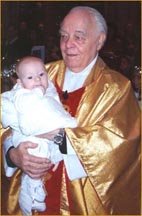
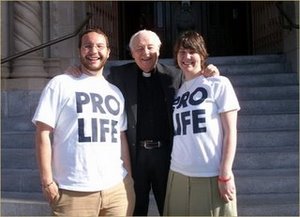
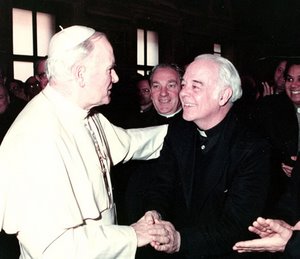
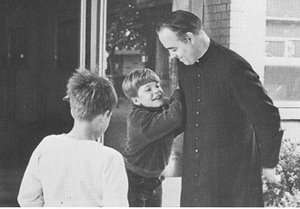
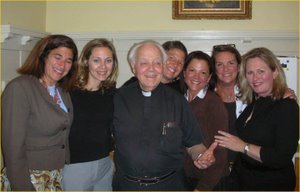
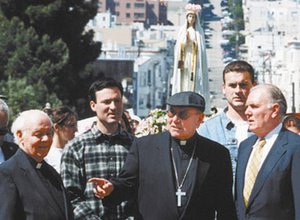
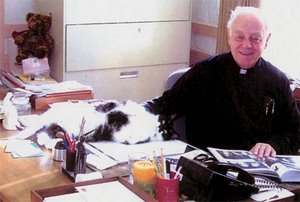



3 comments:
Only two holy priests who are close to Him could could so clearly articulate the truth as you both have. My very first reaction to the Synod was these are men who have lost the faith. What a cogent observation you have made:these men have divorced Him who they are called to especially love Him. Fr. Hardon SJ wrote a biography of a priest, Fr. Gerald Murphy, who ministered to priests. In it, Fr. Hardon quotes Fr. Murphy:
"There is a passage in the Psalms that applies especially to sin in a priest. The Psalmist says I was wounded in the house of a friend. If ever there is a place that should be the house of a friend, it should be the soul of a priest. It should be a house that is given over as a true friend gives over his home when a friend comes to him; so before all else a priest's soul belongs to Christ. It should be the house of his friend. And there the wounds that He receives by the sins of a priest all represent a special depth of anguish; they have a special poignancy to Our Lord because He loves so much".
Then you come to the great beautiful field of reparation. What a privilege! A beautiful symbol of Veronica pushing her way through the lineup as it were, making a special effort, going to Our Lord and lifting her veil and receiving in return the beautiful image of Christ. Lift your soul. O what reparation for the sins of priests. O how precious to Christ is a priest who comes to Him and offers with his bare soul to wipe the terrible spittle and filth that unworthy priests cast each day upon Our Lord. It is true that the physical sufferings of Our Lord are at an end, but the source of those physical and mental anguishes that He bore in the Passion are today and tomorrow and all the tomorrows till the end of time. And it is effectively true that if I make reparation today, Jesus will see that reparation together with Veronica's reparation as He went the Way of the Cross.
Learn the art of reparation and then the very little things that bother you, the little trivia of human limitations around us, the little contradictions and disappointments, can all be gathered up and offered in reparation. They become the myrrh of life. (D-158).
This, in fact, is the essence of devotion to the Precious Blood. It means that we unite our shedding of blood, in spirit if not in body, with the bloody Passion of Christ, and thus effectively draw God's mercy on the sinners, including priests, for whom we expiate.
From Biography of Fr. Murphy
--by Servant of God John Hardon SJ
True mercy...
who wrote this article? Authorship must be attributed. Even editorials must be attributed.
Anonymous, you said "authorship must be attributed. Even editorials must be attributed", I reply, "if so, then comments also should be attributed".
I am content with reading this article. It is edifying. That's all that really matters.
Post a Comment